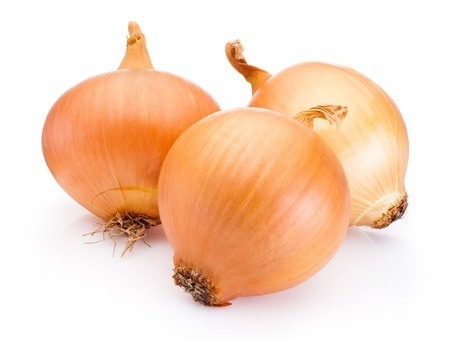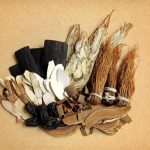
Quercetin is one of those key bioflavonoids, a polyphenol which along with rutin and hesperidin have been important supplements described in the ‘antioxidant story’. Generally, EFSA (2011) does not consider there is strong enough evidence to support an Article 13 health claim for quercetin as in protection of DNA, proteins or lipids from oxidative damage, or any substantive claim in cardiovascular disease, mental health or protection afforded to kidneys and liver. It is a ubiquitous substance which is found in a host of fruits, vegetables, grains, leaves etc. It is most notable in the following: apple skin (Reay and Lancaster, 2001), red onion (Bonaccorsi et al., 2005), red wine, buckwheat tea and green tea, herbs and spices, capers (both raw and canned or salted) and also St. John’s Wort.
Chemistry
A hydrophobic polyphenol that belongs in a subfamily called flavonols. The chemical structure of quercetin consists of 15 carbon atoms with two aromatic rings connected by three‐carbon bridges and three hydroxyl groups (−OH) in the position 3, 5, and 7 in hydroxychromen structure (rings A and C) and two in the position 3 and 4 in hydroxyphenyl structure (ring B).
Nutrition
It is believed we consume in a Western diet, from 0 mg/day to 500 mg/day (Hertog et al., 1993; Manach et al., 1996) although the median is about 10 mg. The daily intake of quercetin is now estimated globally to be 15 – 16 mg (Olthof et al., 2003).
The following amounts are found in 100g fresh weight of the edible portion of these food (Bhagwat et al., 2014) :-
- red onion 39mg/100g
- ordinary onion 20 – 30 mg/100g (Hertog et al., 1992)
- cranberry 15mg/100g
- Blueberry 8mg/100g
- fig 5mg/100g
Benefits Of Quercetin
The benefits may well be obtained within a food matrix because there is no real evidence supporting its use in supplements. It is a molecule however which continues to attract considerable interest because of the numerous interactions in the human diet (Sharma et al., 2018). Bread which is a strong source of quercetin has long been a vehicle for its ubiquitous benefits (Lin & Zhou, 2018).
Supplements are available which allow up to 1200 mg depending on manufacturer’s instructions. Quercetin is also available as a nutraceutical in functional foods where it is offered at 10 to 125 mg per serving (Harwood et al., 2007). However, one issue with quercetin is its poor bioavailability which may in part explain the reluctance of many cite the compound in an claims regulations.
Quercetin And Iron Uptake
Quercetin is a well-known iron chelating agent. In other words it binds iron which prevents it being taken up by the body. Indeed it also influences the uprating of genes for the production of hepcidin. This is a hormone known to inhibit intestinal iron uptake (Lesjak et al., 2018b).
Quercetin tends to be transformed into different compounds. Little is really known about these derived metabolites but understanding how they behave in crucial in understanding why the compound has the dietary benefits it has. One major study examined the antioxidant and anti-inflammatory activities of six quercetin derivatives (quercetin-3-O-glucuronide, tamarixetin, isorhamnetin, isorhamnetin-3-O-glucoside, quercetin-3,4′-di-O-glucoside, quercetin-3,5,7,3′,4′-pentamethylether) (Lesjak et al., 2018). Their performance was compared with an onion extract. Onions are one of the main sources of dietary quercetin. The derivatives showed considerably higher antioxidant activity than quercetin itself but some modifications also reduce this antioxidant activity.
For Which Conditions Does Quercetin Have Therapeutic Potential
Quercetin may have benefits in preventing and treating a number of different chronic conditions. These include:-
- cardiovascular disease (Boots et al., 2008)
- neurodegenerative disease
- cancer
The compound has great potential for its general anti-cancer activities as shown in various animal studies. It probably operates through various mechanisms (Jagtap et al., 2009). It is also a highly potent scavenger of reactive oxygen species (ROS) which marks it out as a top performer amongst all the flavanoids in the antioxidant rankings. This ability may be the reason for its anti-cancer activity. It has been shown to suppress MMP-2 and MMP-9 (MMP – matrix metalloproteinases) expression in prostate cancer cells (PC-3) which are associated with tumour invasion of tissues and metastasis (Vijayababu et al., 2006: Hwang et al., 2009).
Quercetin And Control Of Allergies
Quercetin is taken for its antihistamine effects which makes it suited to relieving the effects of food allergies, asthma and skin irritation. The evidence of its activity is still being gathered and some wild claims have been made about its capacity to combat the effects of histamine. Histamine incidentally, is produced by the body is response to an allergy which induces coughs, swelling, redness of eyes and nose. It is not an unhealthy compound because it is produced for signalling cells to deal with the allergen and protect the body’s tissues.
Alleviation Of Pain
There is a small amount of research assessing the role of flavonoids, especially quercetin in reducing the effects of pain. Chronic conditions such as arthritis and joint pain are due to severe inflammation of tissues around the joints. Whilst strong anti-inflammatories are potent weapons in dealing with such chronic conditions, natural remedies also contribute to reducing the harmful and debilitating effects of severe inflammation. Again, considerable research is required to establish exactly what this mechanism is where flavonoids are concerned.
Lack Of Good Human Intervention Studies With Quercetin Means Claims Are Difficult To Make
One of the issues as in keeping with research on antioxidants, is the lack of human intervention studies supporting the benefits of supplementation with quercetin. In most foods it is glycoslylated as in quercitrin (3-rhamnosylquercitrin) although ‘in vitro’ studies show the aglycone has a bigger impact on health than the glycone form. A form is also bound to rutinoside and makes up about 40% of the quercetin in black tea (Englehardt et al., 1992). Quercetin was found to inhibit oxidation and reduce cytotoxicity of low density lipoprotein in vitro (De Whaley et al., 1990). Most recently, quercetin and its major metabolites the 3-glucuronide (Q3G) and isorhamnetin have been investigated for their effects on inflammatory gene expression using murine (mouse) macrophages stimulated with lipopolysaccharide. Quercetin and isorhamnetin decreased mRNA and protein levels for tumour necrosis factor-α. A number of other inflammation markers were duly affected in a positive manner (Boesch-Saadatmandi et al., 2011). The body of evidence continues to be built for this component.
References
Boesch-Saadatmandi, C., Loboda, A., Wagner, A.E., Stachurska, A., Jozkowicz, A., Dulak, J., Döring, F., Wolffram, S., Rimbach, G. (2011) Effect of quercetin and its metabolites isorhamnetin and quercetin-3-glucuronide on inflammatory gene expression: role of miR-155. J. Nutr. Biochem. 22(3) pp. 293-299
Bonaccorsi, P., Caristi, C., Gargiulli, C., & Leuzzi, U. (2005). Flavonol glucoside profile of southern Italian red onion (Allium cepa L.). J. Agric. Food Chem., 53(7), pp. 2733-2740.
De Whaley, C. V., Rankin, S. M., Hoult, J. R. S., Jessup, W., Leake, D. S. (1990) Flavonoid inhibit the oxidative modification of low-density lipoprotein by macrophages. Biochem. Pharmacol. 39, pp. 1743-1750
EFSA (2011) Scientific Opinion on the substantiation of health claims related to quercetin and protection of DNA, proteins and lipids from oxidative damage (ID 1647), “cardiovascular system” (ID 1844), “mental state and performance” (ID 1845), and “liver, kidneys” (ID 1846) pursuant to Article 13(1) of Regulation (EC) No 1924/2006. EFSA Journal. 9(4):2067 [15 pp.]. doi:10.2903/j.efsa.2011.2067
Engelhardt U., Finger A., Herzig B., Kuhr S. (1992) Determination of flavonol glycosides in black tea. Deutsche Lebensmittel-Rundschau 88 pp. 69-73
Hertog, M.G.L., Hollman, P.C.H. & Katan, M. B. (1992) Content of potentially anticarcinogenic flavonoids of 28 vegetables and 9 fruits commonly consumed in the Netherlands. J. Agric. Food Chem. 40 pp. 2379–2383 (Article)
Hertog M. G., Hollman P. C., Katan M. B., Kromhout D. (1993) Intake of potentially anticarcinogenic flavonoids and their determinants in adults in The Netherlands. Nutr. Cancer 20 pp. 21-29
Harwood M, Danielewska-Nikiel B., Borzelleca J.F., Flamm G.W., Williams G.M., Lines T.C. (2007) A critical review of the data related to the safety of quercetin and lack of evidence of in vivo toxicity, including lack of genotoxic/carcinogenic properties. Food Chem. Toxicol. 45 pp. 2179–205
Hwang, M.K., Song, N.R., Kang, N.J., Lee, K.W., Lee, H.J. (2009) Activation of phosphatidylinositol 3‐kinase is required for tumor necrosis factor‐alpha‐induced upregulation of matrix metalloproteinase‐9: its direct inhibition by quercetin. Intl. J. Biochem. Cell Biol. 41(7) pp. 1592–600 https://doi.org/10.1016/j.biocel.2009.01.014 .
Jagtap, S., Meganathan, K., Wagh, V., Winkler, J., Hescheler J, Sachinidis A. (2009) Chemoprotective mechanism of the natural compounds, epigallocatechin‐3‐O‐gallate, quercetin and curcumin against cancer and cardiovascular diseases. Curr. Med. Chem. 16(12) pp. 1451–62.
Lee, K.W., Kang, N.J., Heo, Y.S., Rogozin, E.A., Pugliese A, Hwang MK, Bowden GT, Bode AM, Lee HJ, Dong Z. (2008). Raf and MEK protein kinases are direct molecular targets for the chemopreventive effect of quercetin, a major flavonol in red wine. Cancer Res. 68(3): pp. 46–55. (Article)
Lesjak, M., Beara, I., Simin, N., Pintać, D., Majkić, T., Bekvalac, K., … & Mimica-Dukić, N. (2018a). Antioxidant and anti-inflammatory activities of quercetin and its derivatives. Journal of Functional Foods, 40, pp. 68-75. https://doi.org/10.1016/j.jff.2017.10.047
Lesjak, M., Balesaria, S., Skinner, V., Debnam, E. S., & Srai, S. K. S. (2018b). Quercetin inhibits intestinal non-haem iron absorption by regulating iron metabolism genes in the tissues. European Journal of Nutrition. pp. 1-11 (Article)
, & (2018). Role of quercetin in the physicochemical properties, antioxidant and antiglycation activities of bread. Journal of Functional Foods, 40, pp. 299–306 (Article).
Manach, C., Texier, O., Morand, C., Crespy, V., Régerat, F., Demigné, C. & Rémésy, C. (1999) Comparison of the bioavailability of quercetin and catechin in rats. Free Radic. Biol. Med. 27 pp.1259-1266.
Olthof M.R., Hollman P.C.H., Buijsman M.N.C.P., Amelsvoort, J.M.M., Katan, M.B. (2003) Chlorogenic acid, quercetin-3-rutinoside and black tea polyphenols are extensively metabolized in humans. J. Nutr. 133 pp. 1806–1814. https://academic.oup.com/jn/article/133/6/1806/4688124


I find quercetin is ideal for my sulphite allergy. I’m also sneezing after I drink wine so when I started taking capsules of this active. It seems to help take away the tickle. I dont believe there are any health issues with this but I must admit it does help me.